He’s considered to be one of the most renowned Renaissance artists in the northern part of Europe, and in this post, you’ll discover the ultimate list of facts about Jan van Eyck.
Related: Check out van Eyck’s most famous paintings!
1. Jan van Eyck was one of the Flemish Primitives
Jan van Eyck was one of the most renowned and influential painters of the early 15th century, mostly active in Bruges in modern-day Belgium. This Flemish artist was the founding father of what we now call the “Early Netherlandish painting,” also referred to as the “Flemish Primitives.”
He was also one of the key figures in the Early Northern Renaissance, the Renaissance that happened north of the Alps and which had a lot in common with the art movement taking place in Italy at the time.
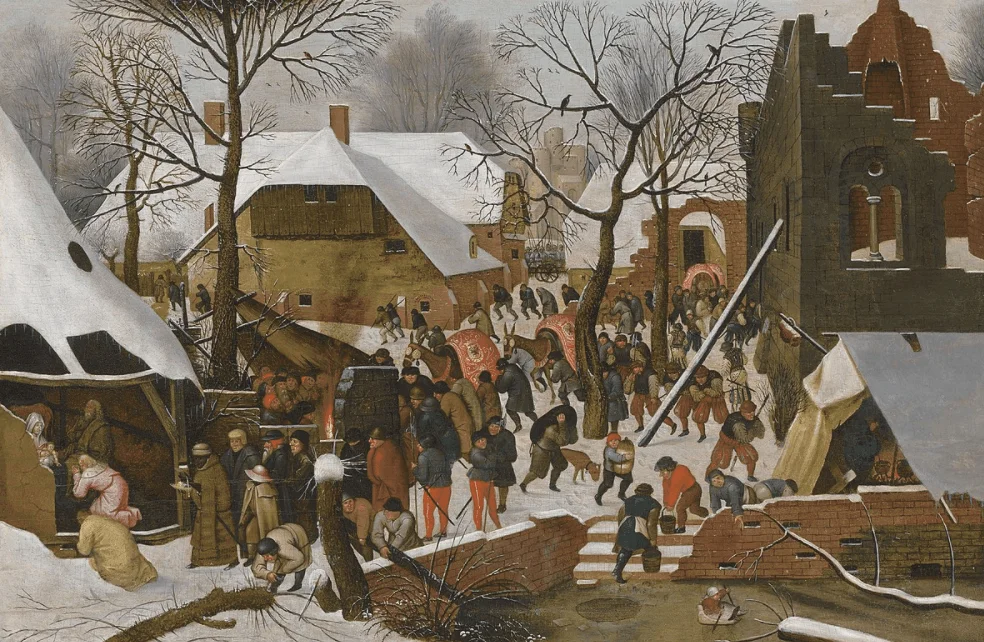
2. His name refers to his place of birth
While it’s not exactly certain when van Eyck was born, with some sources stating anywhere between 1380 and 1395, we are pretty sure he was born in a town called “Maaseik” in the diocese of Liège, now located in modern-day Belgium. This town was called “Maaseyck” back then and his name is a reference to his hometown and basically means “From Eyck.“
The first time his name is mentioned in history was in 1422 when it was mentioned that “John III the Pitiless,” the Duke of Bavaria-Straubing and ruler of Holland, Hainault, and Zeeland, made payments to a certain “Meyster Jan den malre” (Master Jan the painter) in The Hague.

3. Only 20 surviving paintings are attributed to him
One of the most interesting facts about Jan van Eyck is that even though he was a very prolific painter, only 20 paintings are conclusively attributed to him.
All of these paintings are dated between 1432 and 1439, the peak of his career. This also makes it fairly certain that he created dozens of paintings that are either not attributed to him or simply lost in history.
Back in the 1980s, this number was much higher, but of the 40 paintings attributed to him back then, about half is disputed by renowned art historians today.
4. He created both secular and religious paintings
Van Eyck created various paintings that included both secular and religious subjects. He took commissions from private clients as well as of members of the court and his paintings were either single panels, diptychs (2 panels), triptychs (3 panels), and polyptychs (multiple panels).
His religious paintings included altarpieces and single-panel religious figures, while his secular work consisted of portraits of individuals or couples, such as the Arnolfini Portrait.
5. He transformed the International Gothic style
The Renaissance in the northern part of Europe never really completely left out Gothic influences. The transition was more gradual than the art movement in Italy and it’s fair to conclude that it is a style that outgrew the International Gothic style.
Jan van Eyck was one of the most important artists to make the transition from the Gothic style to the Renaissance by incorporating more naturalism and realism in his works and mastered the use of oil paint to achieve this.
6. He became rich as a court painter
After John III died in the year 1425, van Eyck moved to Lille (modern-day France) where he was noticed by Philip the Good, the Duke of Burgundy. He became the most important court painter at the time and eventually moved to Bruges in 1429 where he would live the rest of his life.
One of the most intriguing facts about Jan van Eyck is that he was paid hefty sums of money by Philip the Good so he wouldn’t have to worry about money. This way he could fully focus on his art and painter whenever he felt like it.
This made him one of the richest painters of his time as well!
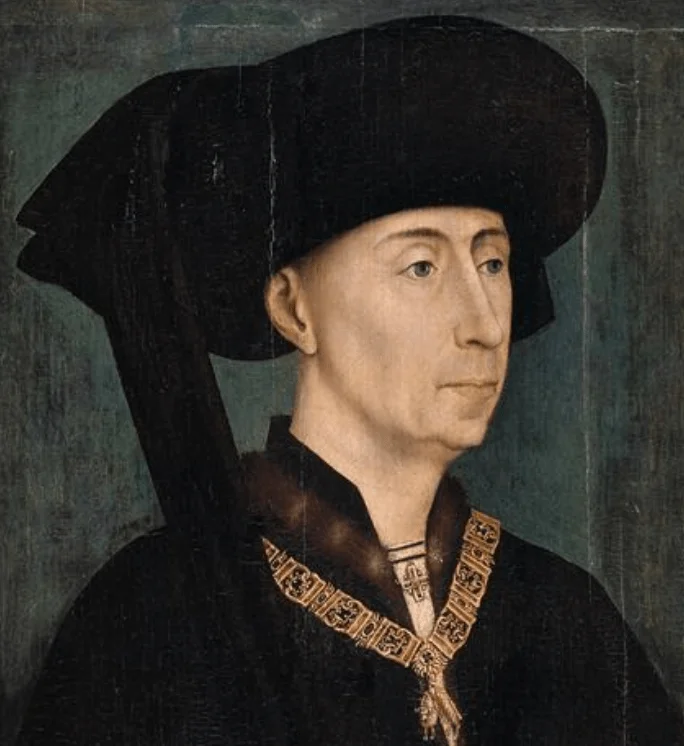
7. His most famous painting was created for a private client
While he was making good money at the court of Philip the Good, this didn’t hold him back from accepting commissions from private clients as well.
One of his most famous paintings referred to as the “Ghent Altarpiece” or “Het Lam Gods” in Dutch, was commissioned by merchant Jodocus Vijd, the mayor of Ghent mid-1420s.
This massive painting consisting of multiple panels was completed in 1432 and it’s assumed that both Jan and his brother Hubert van Eyck completed it. It’s located in St Bavo’s Cathedral in Ghent, Belgium, and is considered to be one of the ultimate masterpieces of European art.
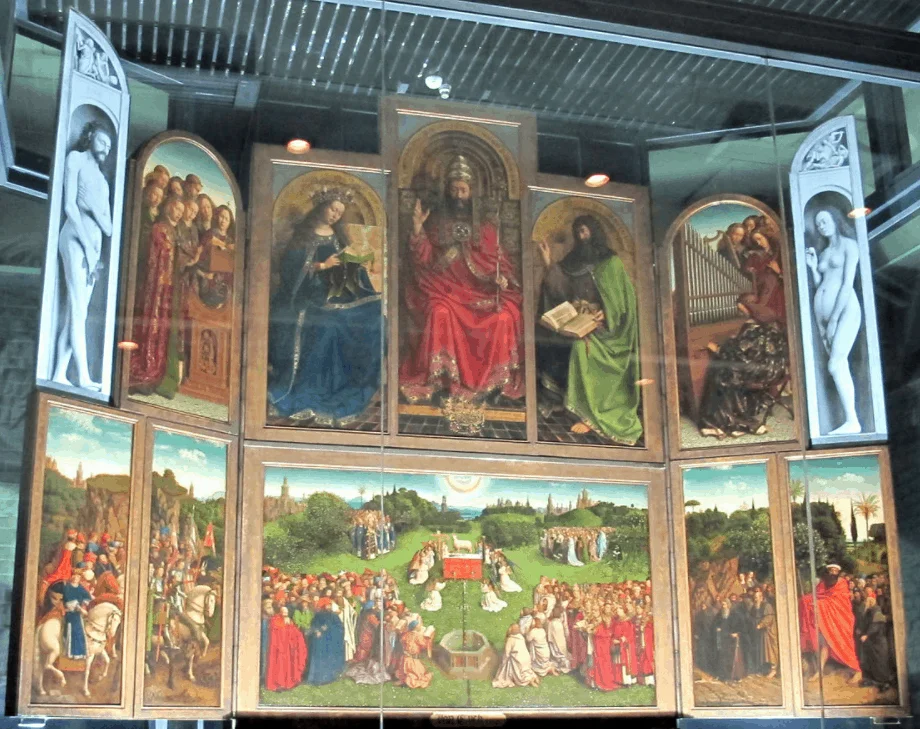
8. He created one of the most famous signatures in art history
The reason we can confidently attribute at least 20 paintings to van Eyck is that he used a trademark signature to sign them. This signature, which was painted in Greek characters, read “ALS ICH KAN” (As I (Eyck) can).
He specifically used the word “ICH,” which is the local dialect of his place of birth Maaseik, as opposed to the correct Dutch spelling of “I,” which is “IK.” This is a reference to his name, while the word “KAN” is a reference to the Dutch word “Kunst,” which means “Art.”

9. Van Eyck married a much younger woman and painted her
The painter married a much younger woman (at least that is assumed) in the early 1430s. Her name was Margaret and very little is known about the woman. Even her maiden is unknown so now she is referred to as “Margaret van Eyck,” while in contemporary records she is known as “Damoiselle Marguerite.”
What we do know is that the couple had two children and the first one was born in 1434. Her husband also created a portrait of her in the year 1439 when she was around the age of 33. This portrait is believed to be half of a diptych panel with the other half being a self-portrait of Jan van Eyck, which is now lost.
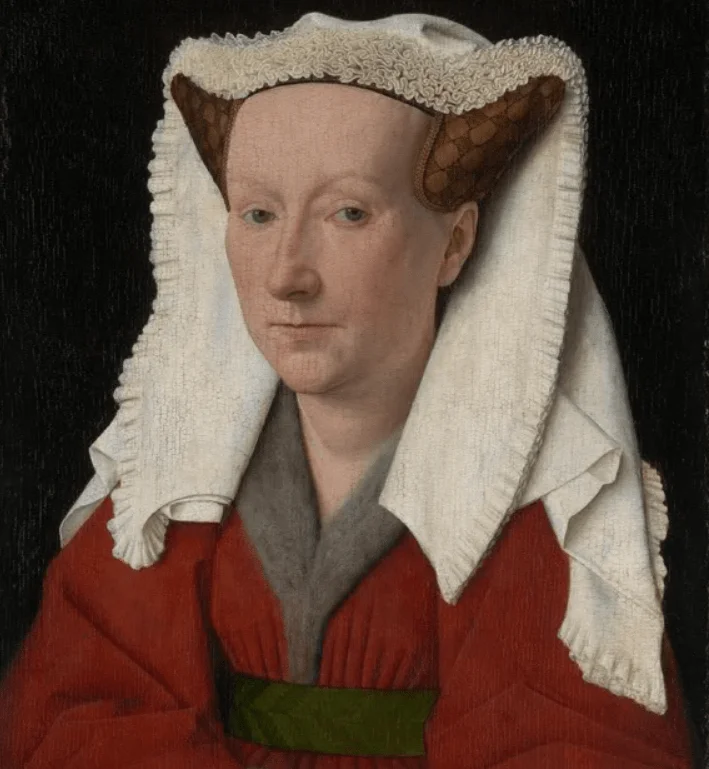
10. He probably visited the Holy Land, but nobody knows why
One of the most fascinating facts about Jan van Eyck is that he most probably wasn’t just held in high regard for his talent as a painter by Philip the Good, but also for his level of intelligence and education. The fact that he signed some of his paintings with Greek letters and was proficient in Hebrew and Latin indicates that he was an educated man.
Because of this, he was also sent out on diplomatic missions between 1426 and 1429, which were marked as “secret missions.” It’s assumed that one of these missions brought him all the way to the Holy Land in 1426 when he “departed to a certain distant land.”
While it’s not sure he actually visited Jerusalem, this theory is made strong by the fact that the landmarks in the city were painted with an extreme degree of topographical accuracy in a painting of 1426 called “The Three Marys at the Tomb.“
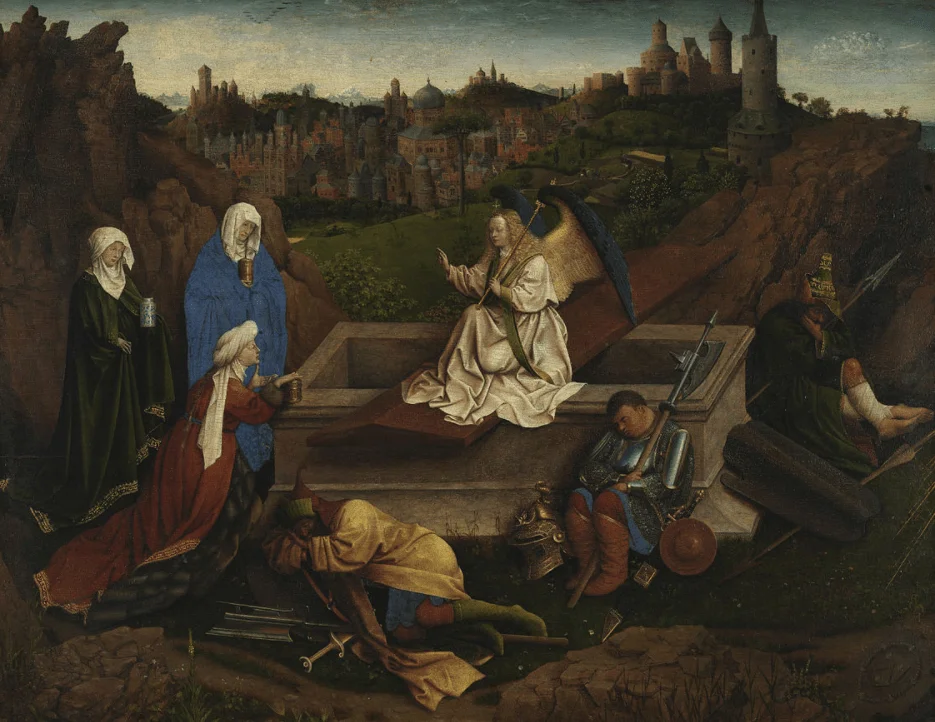
11. Van Eyck died in 1441 and was buried in a church in Bruges
If it’s true that van Eyck was born in 1380, it means that he died in his early 60s. He passed away on July 9, 1441, in the city of Bruges where he lived.
While he was already seen as a revolutionary and renowned painter during his lifetime, this sentiment only grew after his death. because of this, his brother Hubert had his body exhumed in early 1442 and buried inside St. Donatian’s Cathedral, the largest cathedral in Bruges at the time.
The interior of this church, which was destroyed in the aftermath of the French Revolution in 1799, was depicted by van Eyck in one of his works called “The Virgin and Child with Canon van der Paele” (1436). This painting was created just 6 years before he would be buried there himself.
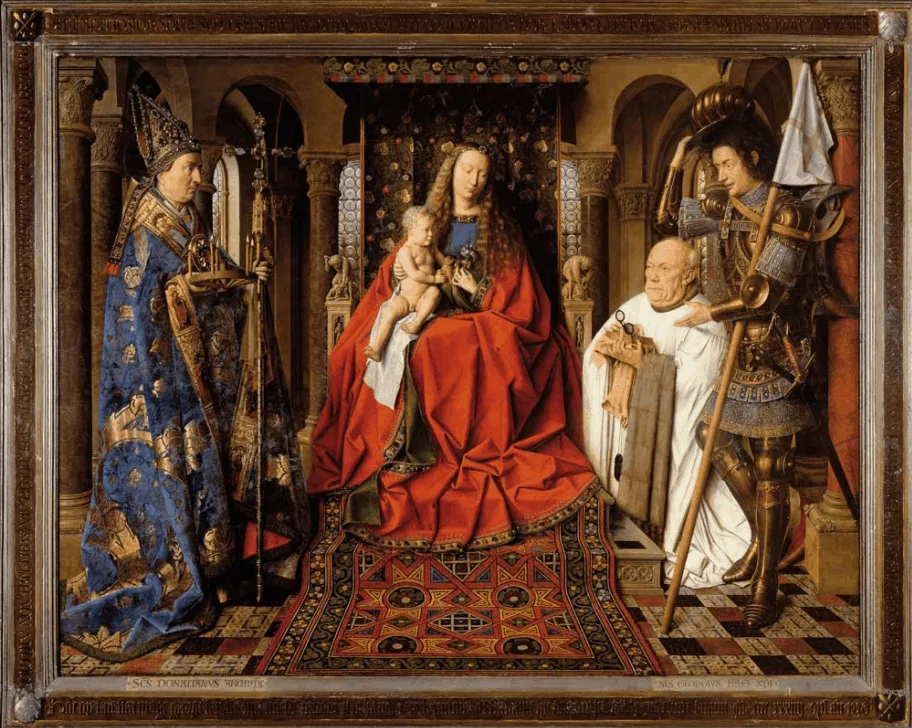
12. Only one of the multiple triptychs he created survives
Most of the work of the painter consisted of multiple panels. Unfortunately, today, most surviving paintings consist of single panels that used to be part of diptychs, triptychs, or even polyptych panels.
Apart from the Ghent Altarpiece, which consists of multiple panels, the only triptych created by van Eyck that survived the centuries is the “Dresden Altarpiece.”
This is a very small hinged triptych work now on display at the “Gemäldegalerie Alte Meister “in Dresden, along with the “Sistine Madonna,” one of the most famous works by Raphael.

13. Nearly all of his religious paintings include the Virgin Mary
We have to emphasize again the uniqueness of the Ghent Altarpiece because it’s literally the only surviving religious painting by van Eyck that doesn’t turn the Virgin Mary into the central figure.
In all of the other paintings with a religious theme, the Virgin Mary is the main figure, often seated and wearing red. The reason for this is because she became really important in the early 15th century and was considered the mediator for souls while they are purgatory and waiting to go to heaven.
Many wealthy individuals of the Christian faith, therefore, commissioned paintings together with the Virgin Mary in an attempt to reduce the time they had to spend in purgatory. This includes, for example, Nicolas Rolin, the Chancellor to Philip the Good.

14. He was one of the most renowned portrait painters of his time
One of the most remarkable facts about Jan van Eyck is that he was also one of the most popular portrait painters of his time.
This aspect of art became widespread and wasn’t just limited to the royal family anymore as it was previously. It was part of the transformation of the Renaissance which enhanced the sense of individuality and self-awareness.
Therefore, van Eyck created a number of portrait paintings, mostly in the same position and with a three-quarter view. This was inspired by portraits from antiquity and would eventually spread all across Europe.
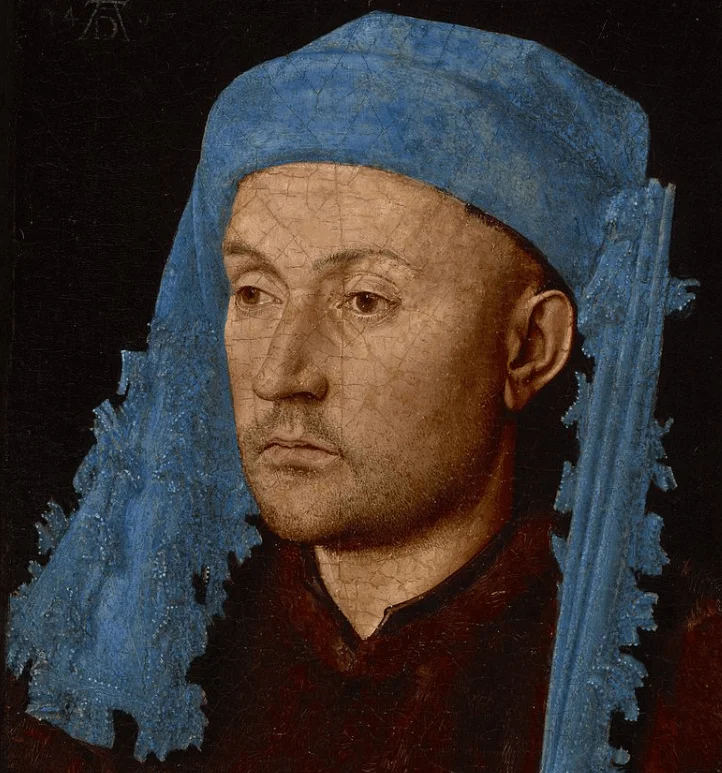
15. He added inscriptions to his paintings based on the work
One of the most amazing facts about Jan van Eyck is that he inscribed most of his works using either Greek, Latin, or Dutch letters. These inscriptions vary based on the work he painted and the motives.
The portrait of his wife is inscribed with:
My husband Johannes completed me in the year 1439 on 17 June, at the age of 33. As I can.
Inscription on the Portrait of Margaret van Eyck.
The inscription on the painting “The Virgin and Child with Canon van der Paele” reads:
Joris van der Paele, canon of this church, had this work made by painter Jan van Eyck. And he founded two chaplaincies here in the choir of the Lord. 1434. He only completed it in 1436, however.
Painting inscription.
Most art historians agree that he did this in order to assure later viewers that he was in fact the one who completed the work and nobody else made any additions to them!



